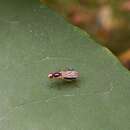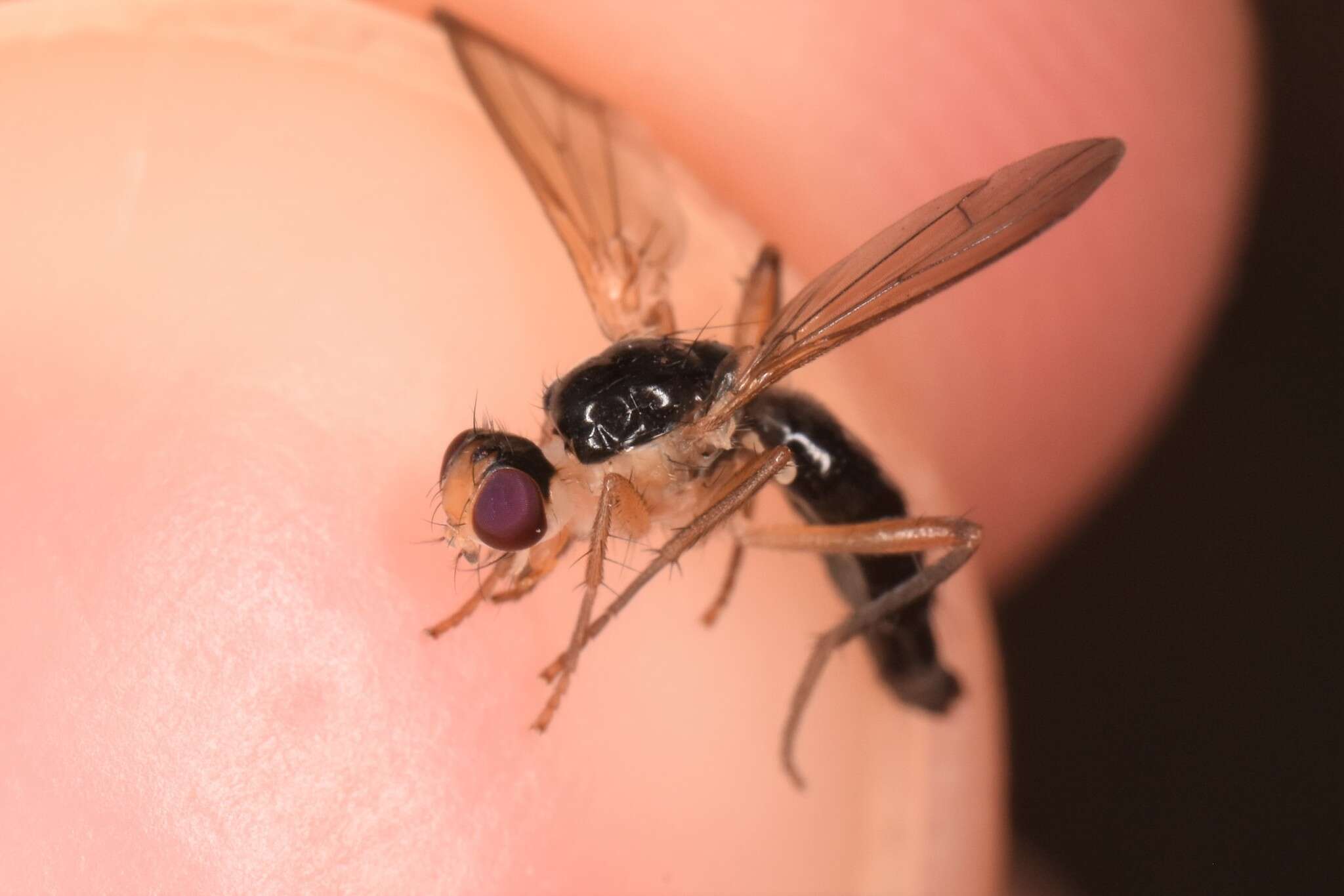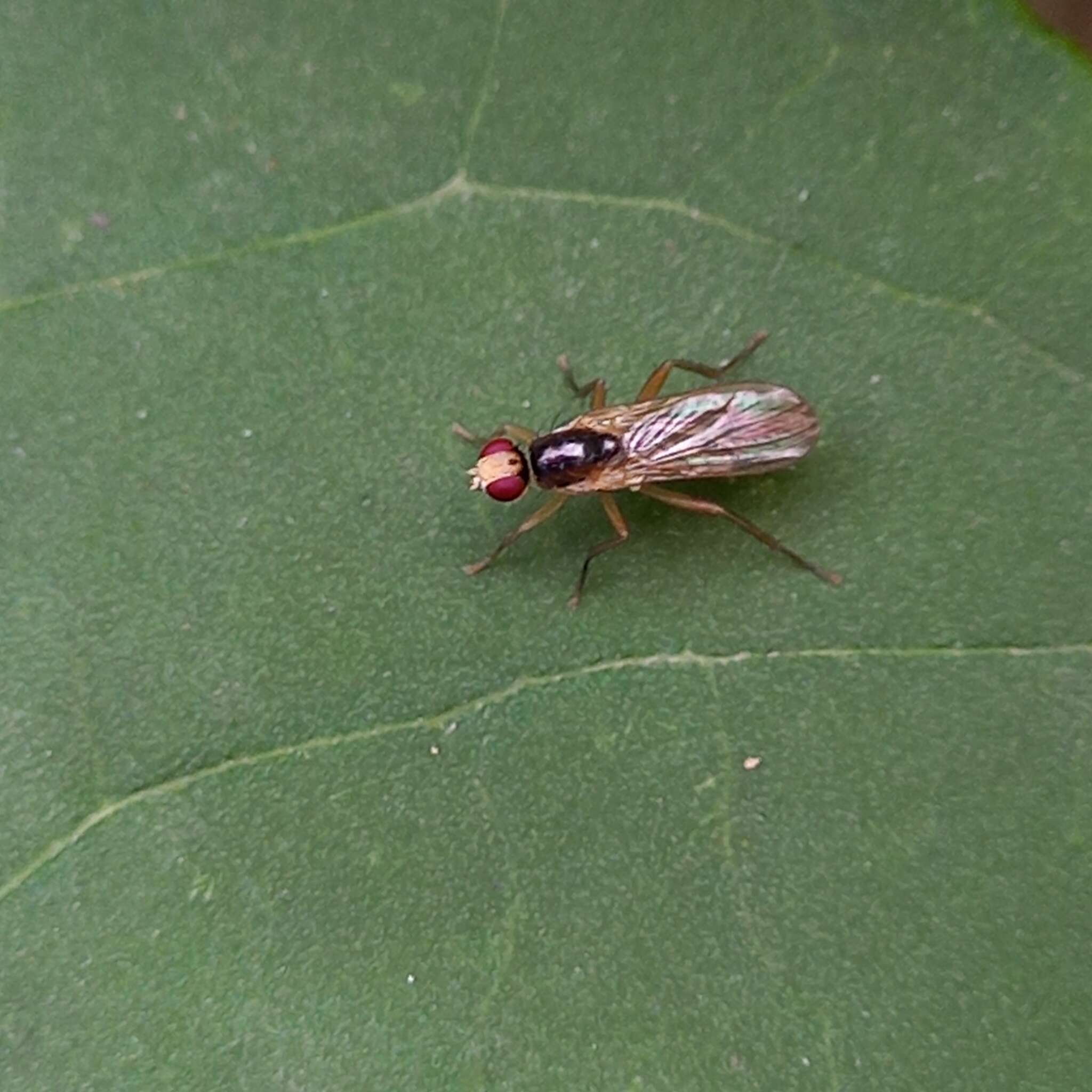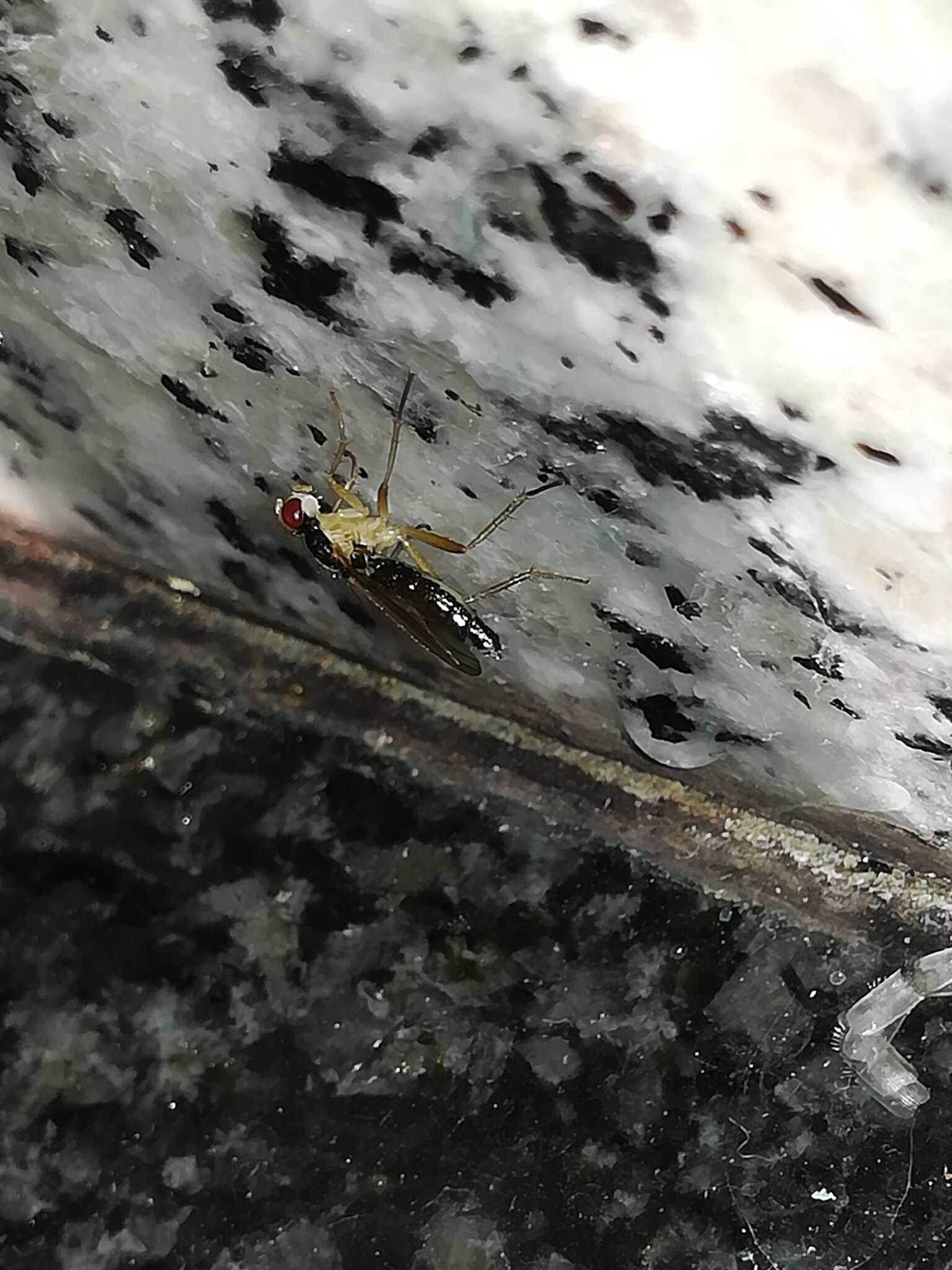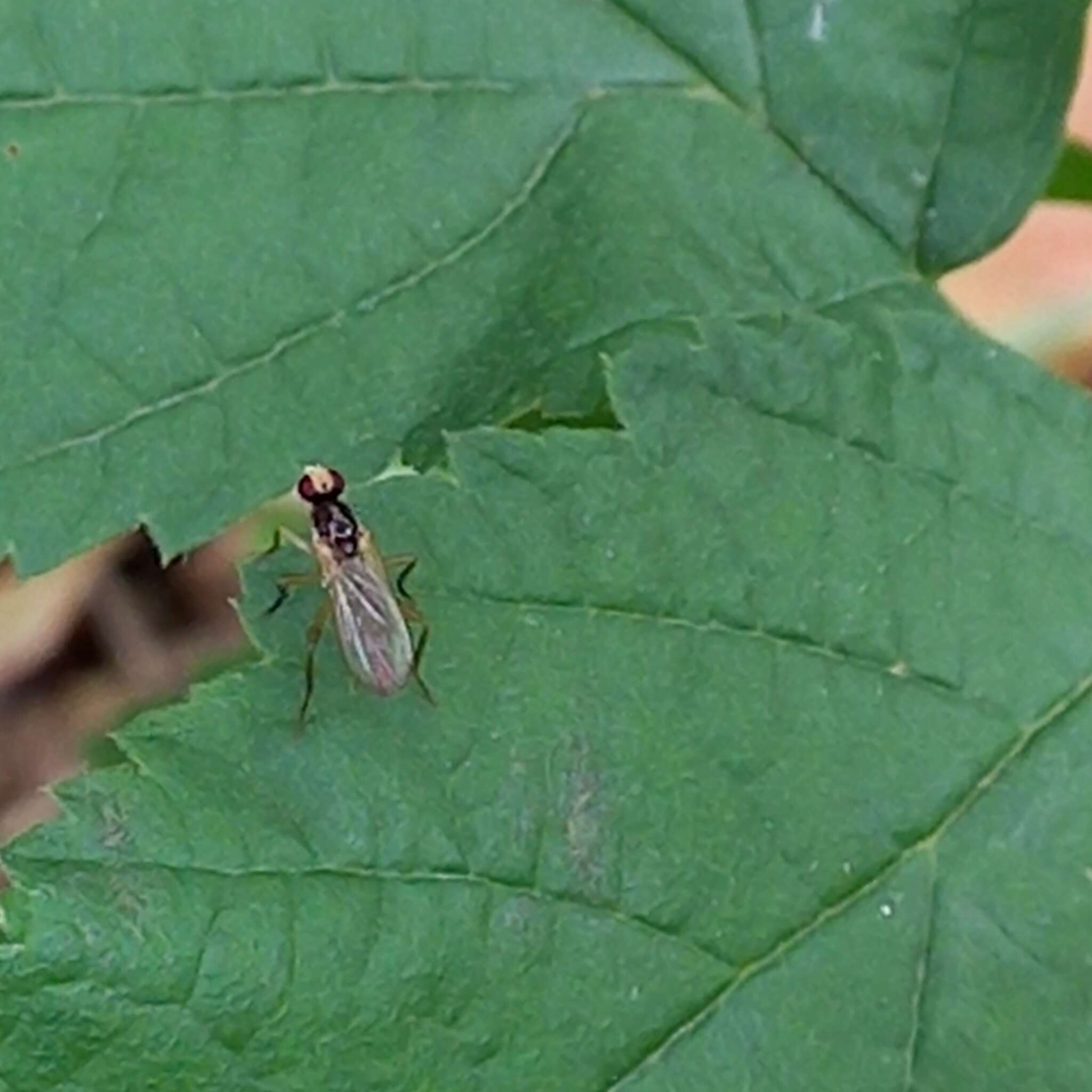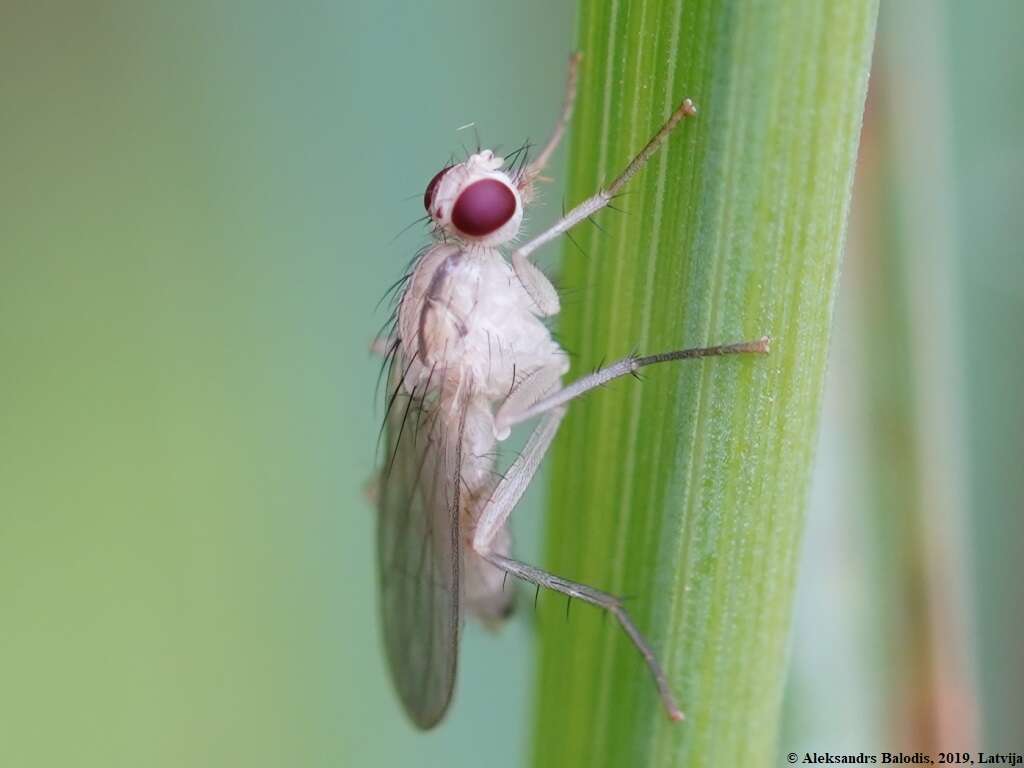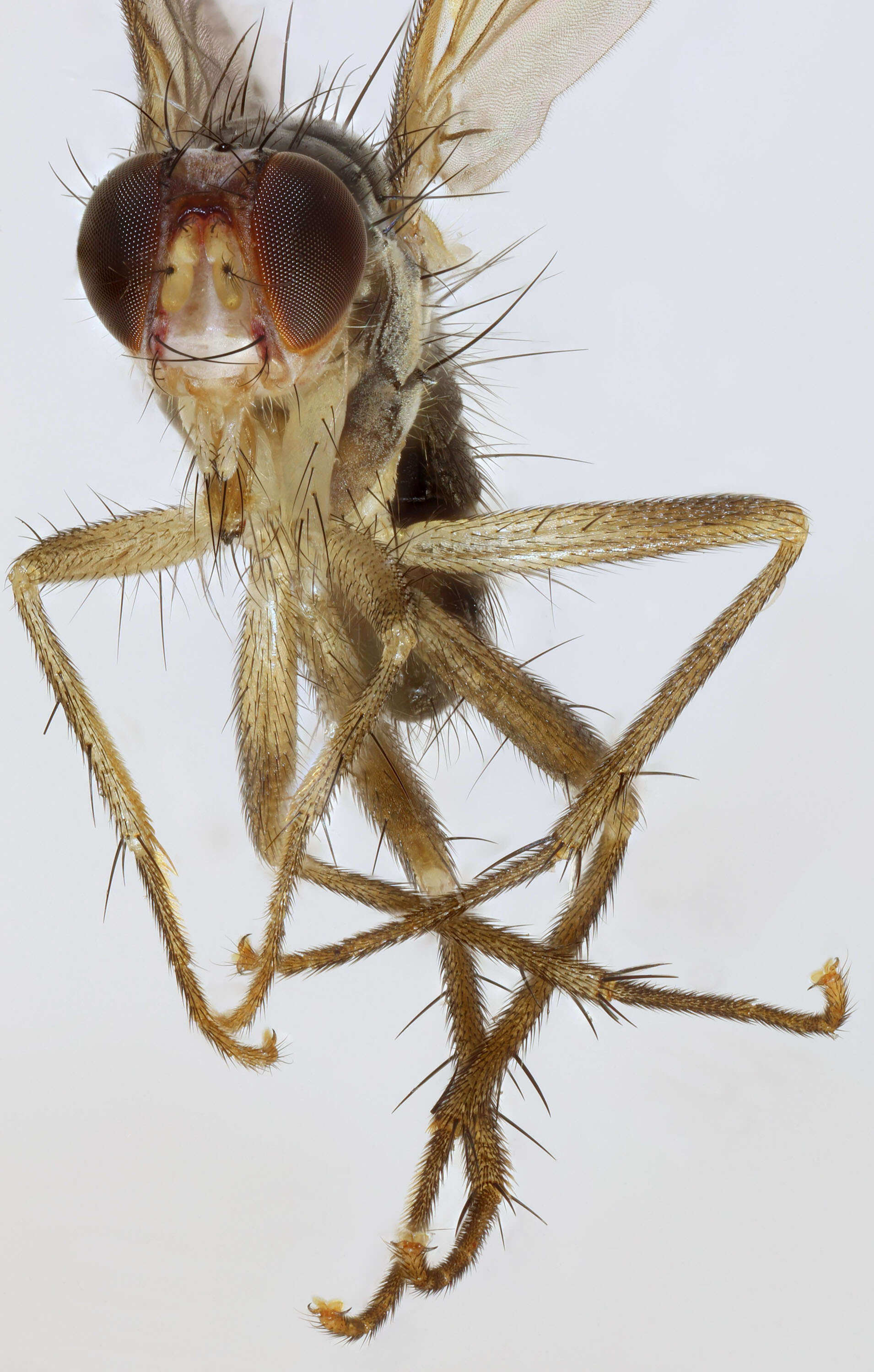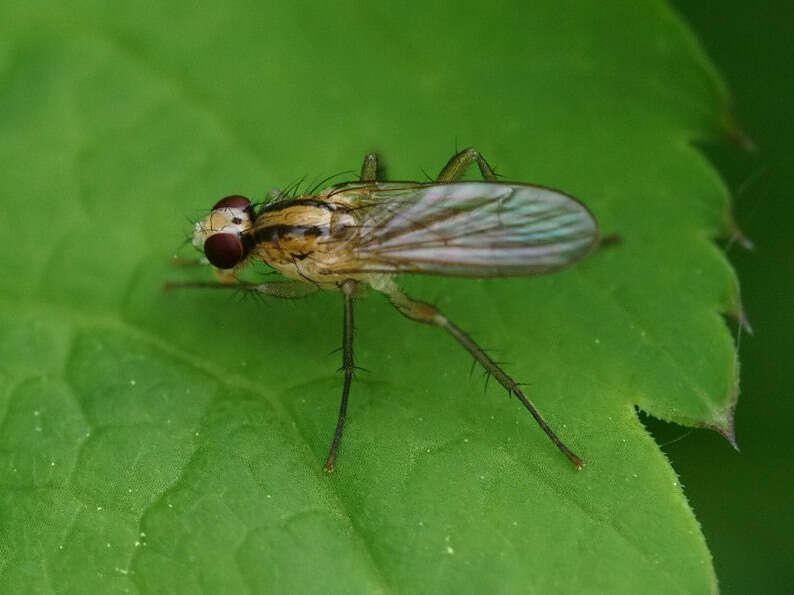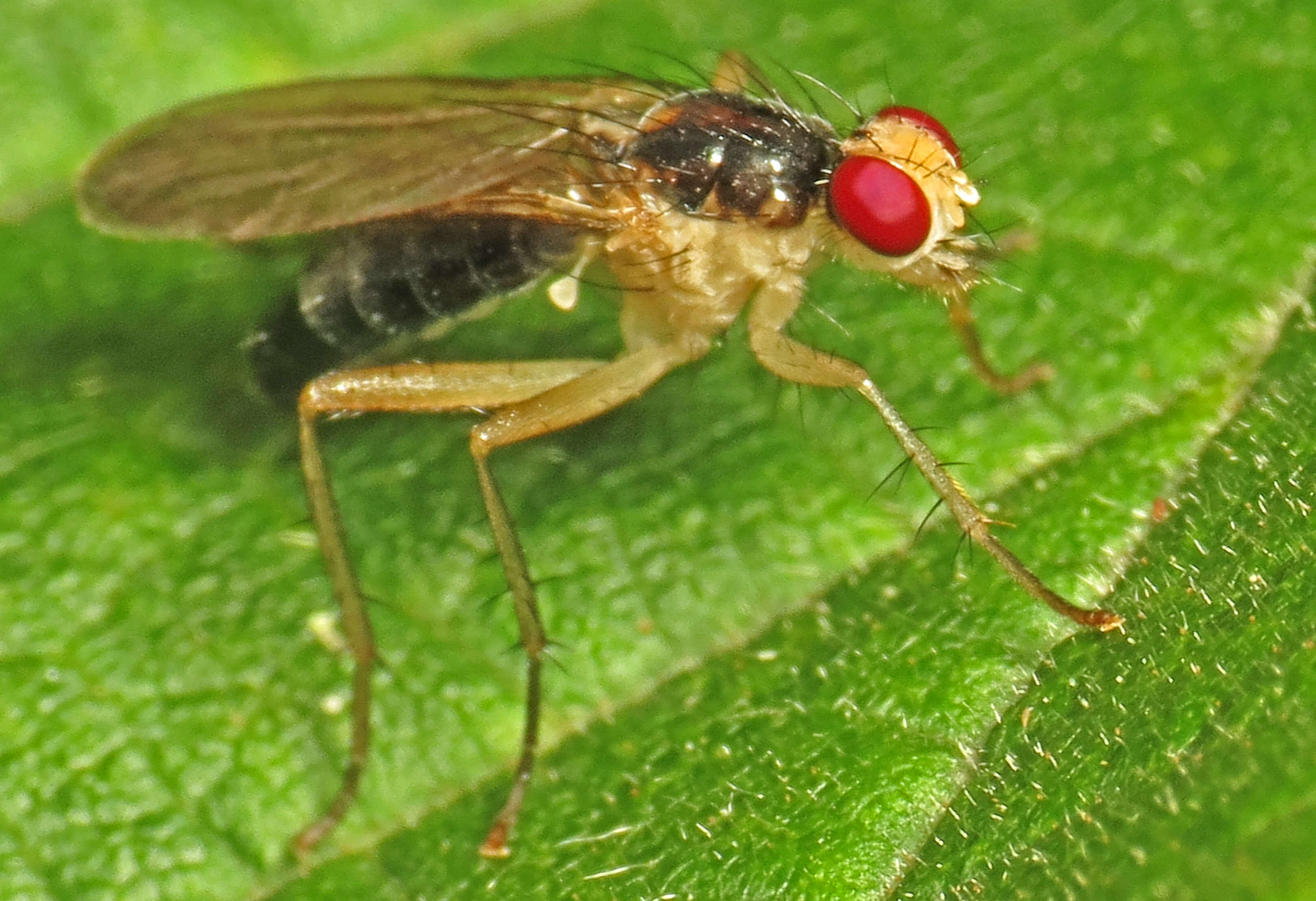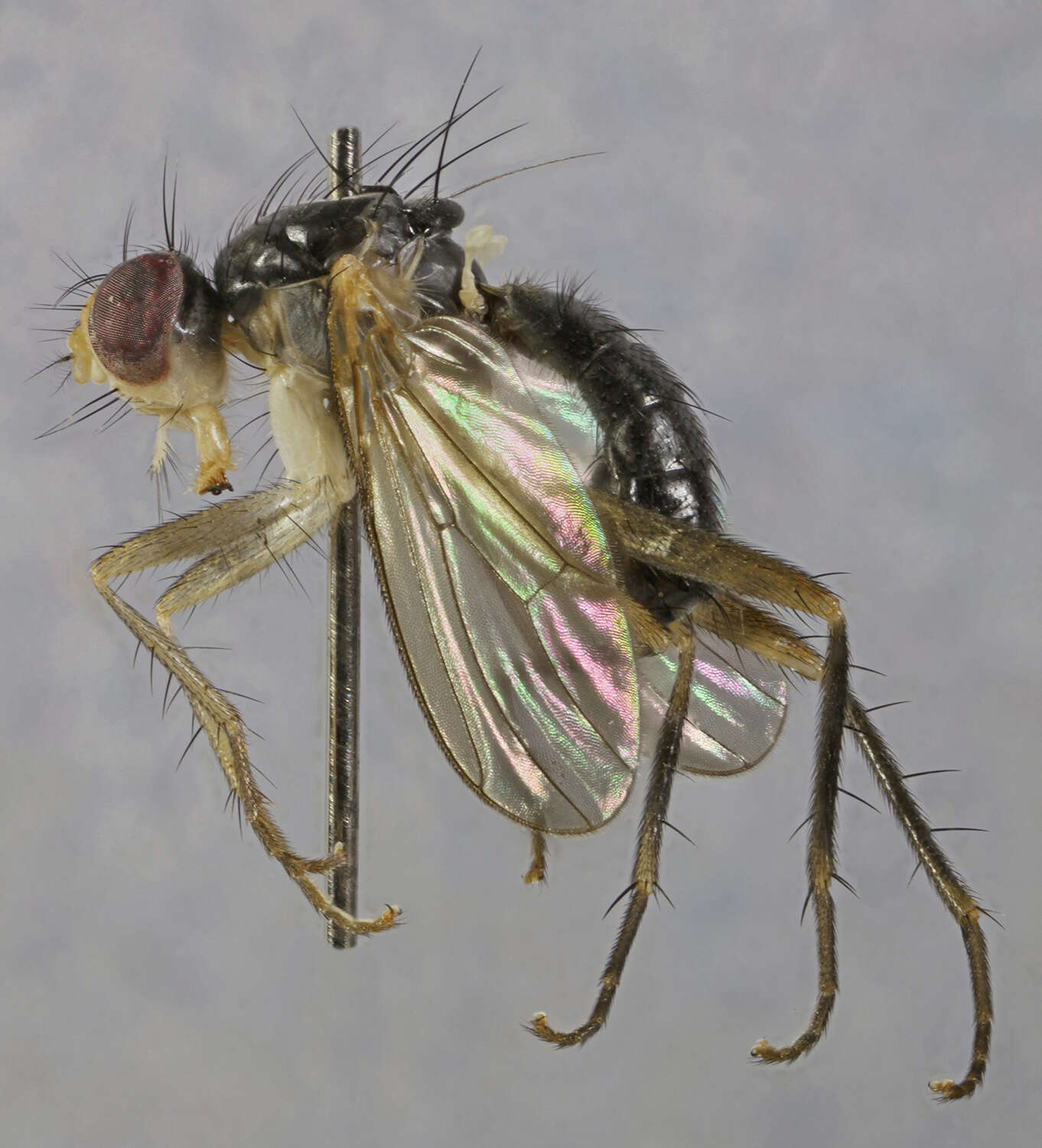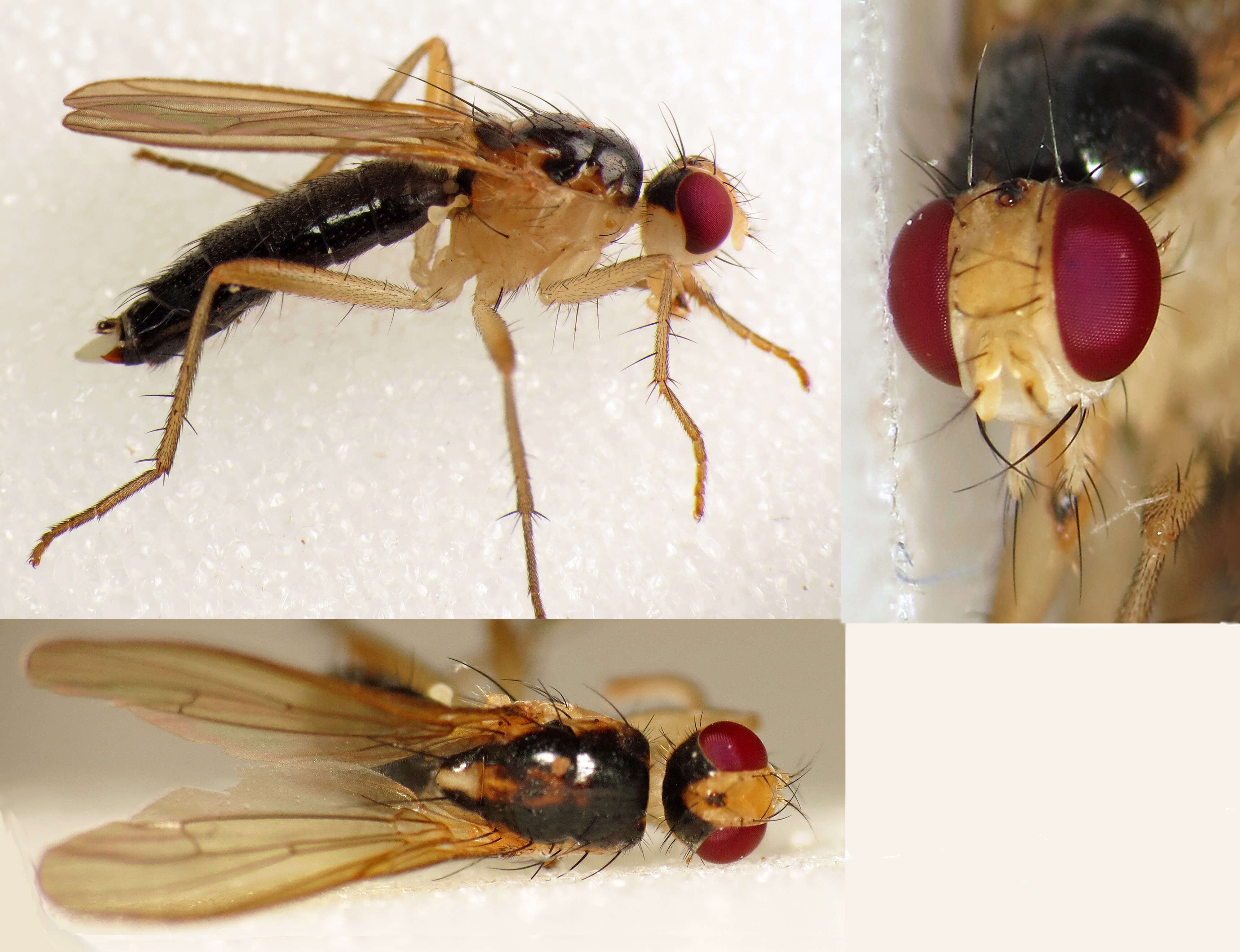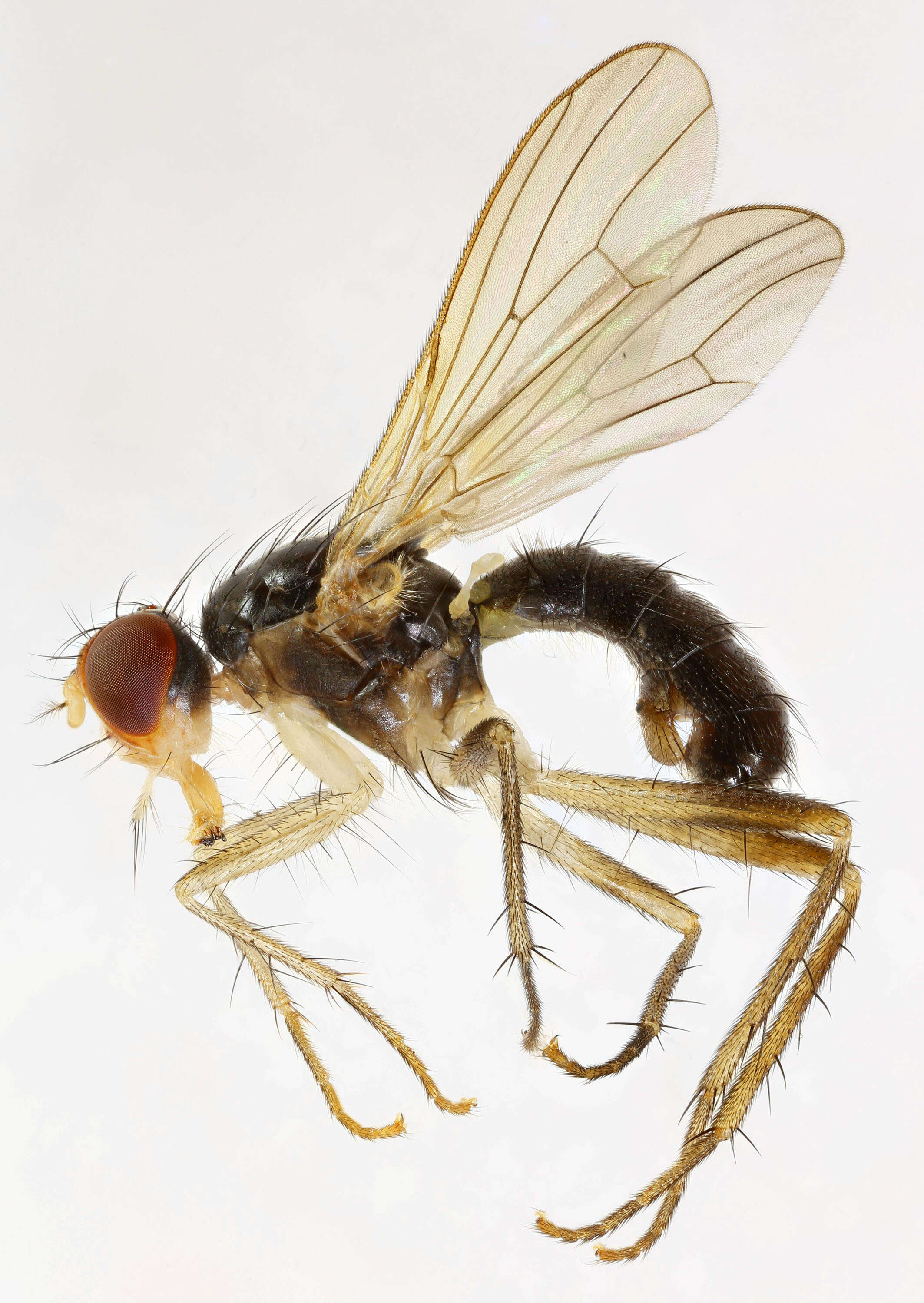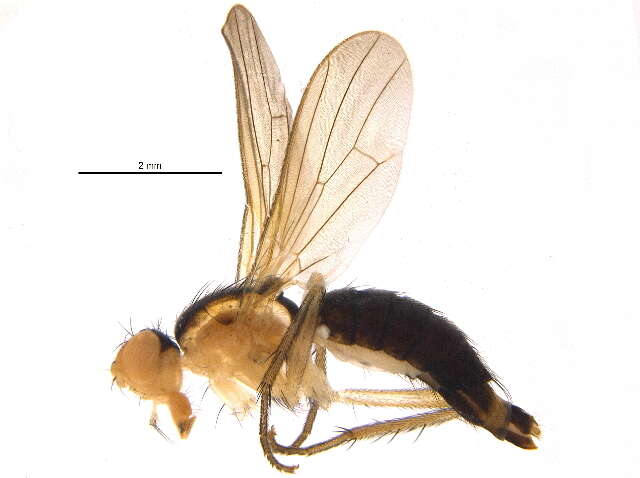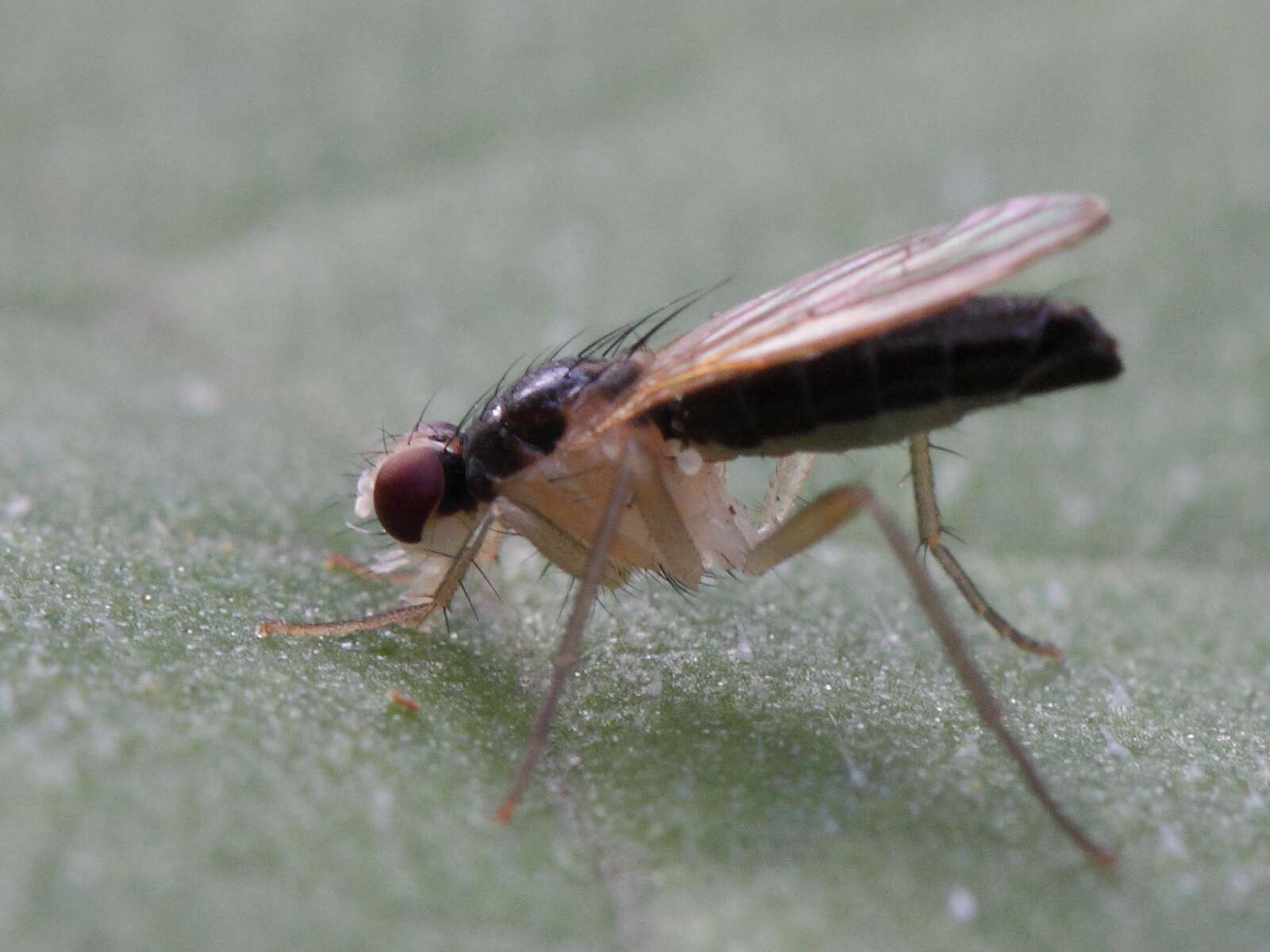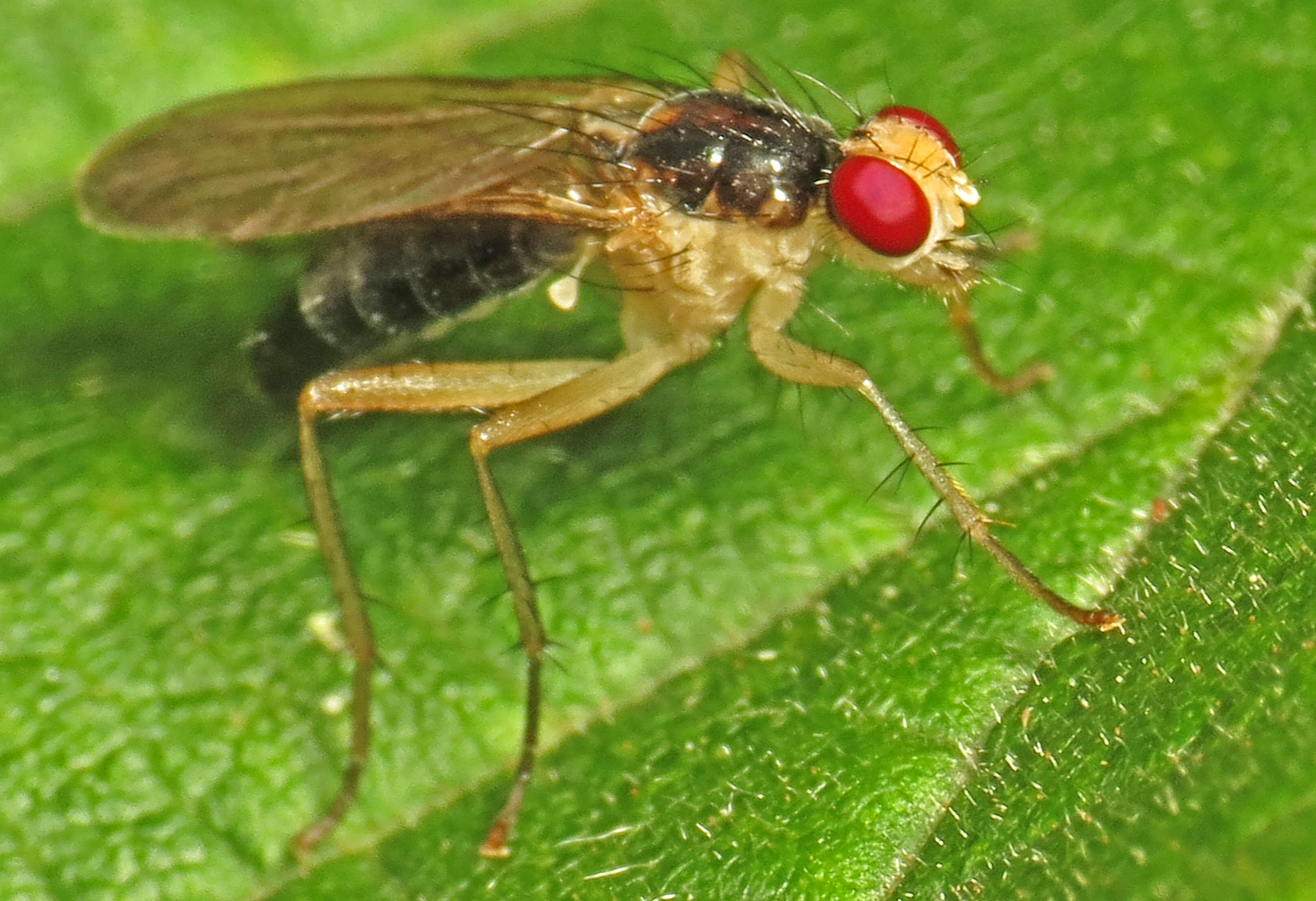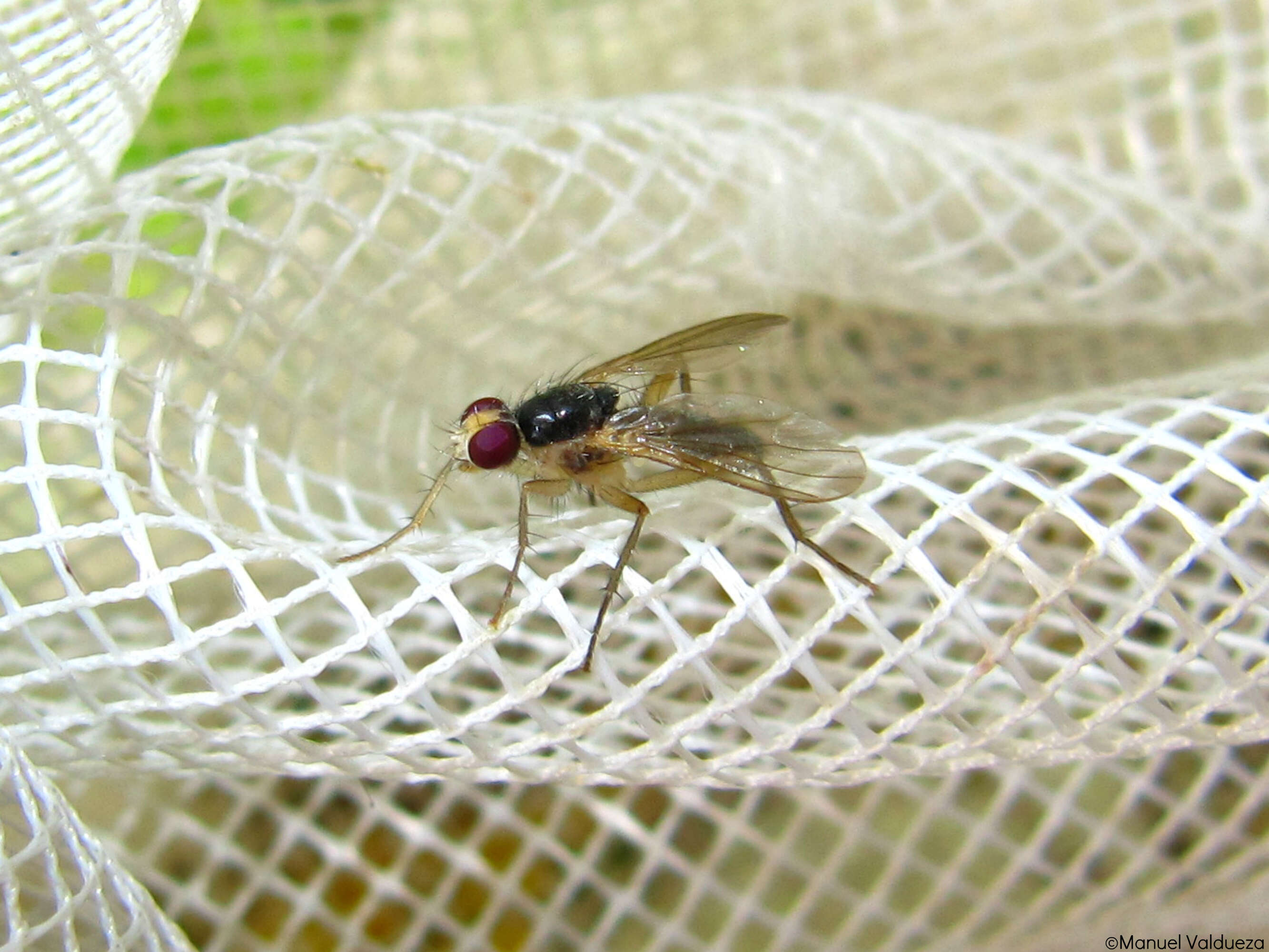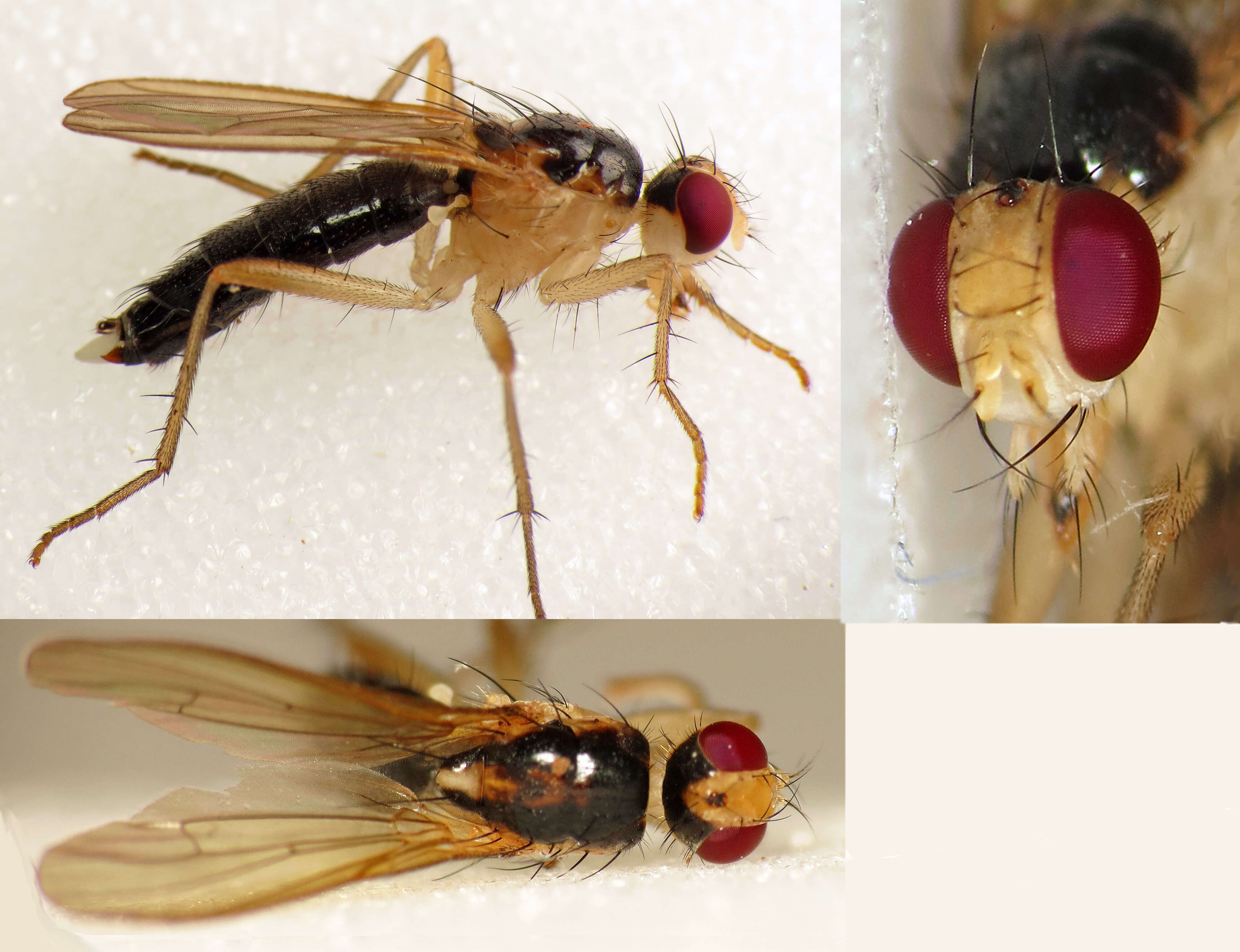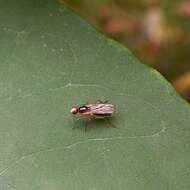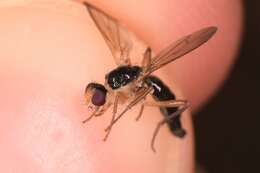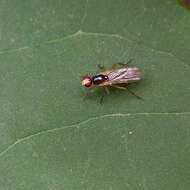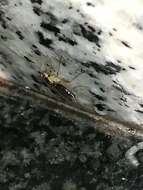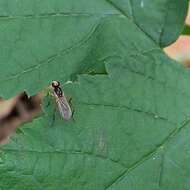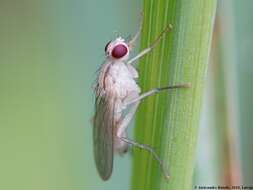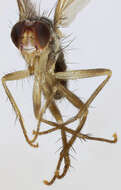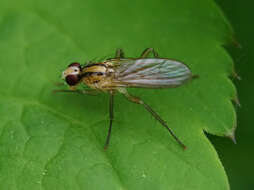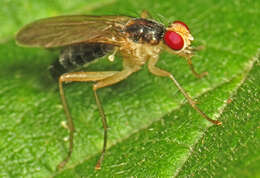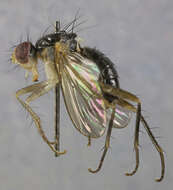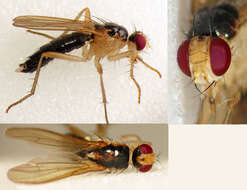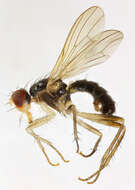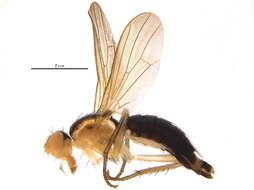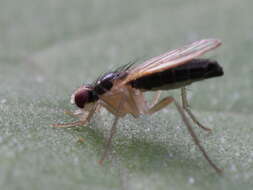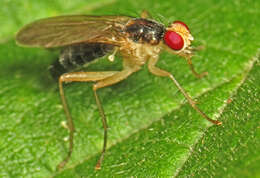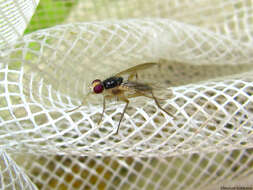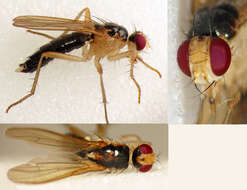L: 3.6-5.2mmchacacteristics: The whole dung fly family shows the back of the head noticeably rounded with a patch of fine hair on the bottom part of the occiput. In this small and distinctive species the legs, the sides of the thorax and abdomen are pale creamy yellow, contrasting the black thoracic dorsum.biotope: damp, shady places (grasslands, marshes fens, trees & bushes near water); larvae develop in the culms of sedges (
Carex,
Scirpus and
Juncus; recently larvae were found to be leaf miners in
Polygonatum odoratum, see:
www.gabi-krumm.de/fliegen.htm).imago: adults in May and June (here: October?)Phylum: Arthropoda LATREILLE, 1829 (arthropods, Gliederfer)Subphylum: Hexapoda BLAINVILLE, 1816 (Sechsfer)Class: Insecta LINNAEUS, 1758 (insects, Insekten)Subclass: Pterygota LAMM, 1888 (Fluginsekten)Infraclass: Neoptera Martynov, 1923Order: Diptera Linnaeus, 1758 (true flies, mosquitoes & gnats, Zweiflgler)Suborder: Brachycera Schiner, 1862 (true flies, Echte Fliegen)Infraorder: Muscomorpha [Syn.: Cyclorrhapha]Superfamily: MuscoideaFamily: Scathophagidae (dung flies, Dungfliegen) [Syn.: Cordyluridae]some info on dung flies:
scathophagidae.myspecies.info/scathophagid-checklist/scat...Genus:
Parallelomma BECKER, 1894
Cordilura albipes FALLN, 1819 [Syn.: Parallelomma albipes FALLN, 1819][det. tristam, 2017, based on photos via diptera.info forum]some info:
scathophagidae.myspecies.info/scathophagid-checklist/cord...more info:
bugtracks.wordpress.com/2012/12/31/some-sedge-bugs/photo:
scathophagidae.myspecies.info/gallery?f[0]=im_field_taxonomic_name%3A33KEY:
scathophagidae.myspecies.info/sites/scathophagidae.myspec...Germany, Berlin: Tempelhofer Feld, 14.10.2012IMG_2707

